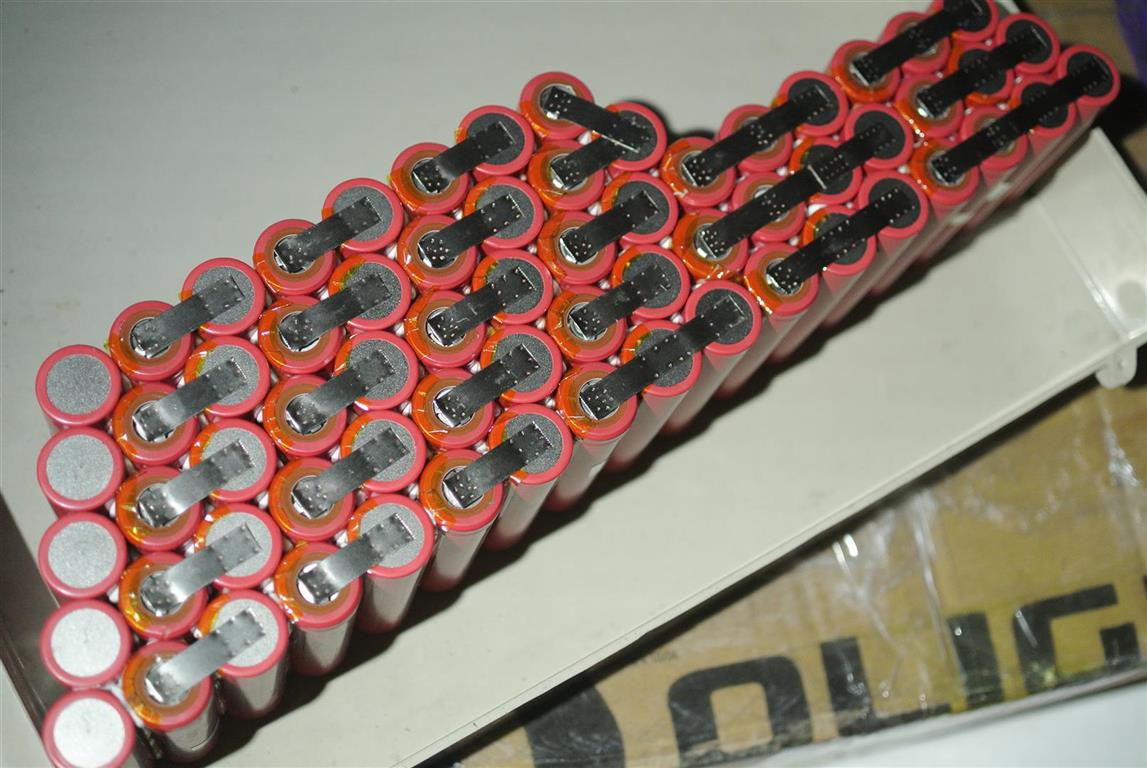Speaking of power tools.
I have taken apart almost all of my DeWalt packs (I have a quite an extensive collection

) the larger 20V's have 10 high drain 18650's in them (pancake/smaller ones only have 5 of course) (5.0AH's have the blue 2500MAh's in them and the 3.0's have 1.5MAh's in them and they are red in colr)
5 * 3.7V nominal = 18.5V... 4V*5 = 20V "MAX"... They are 18V batteries but in the US they are marketed as 20V... the EXACT same batteries in Europe are 18V!

(
http://toolguyd.com/blog/wp-content/uploads/2012/07/Dewalt-18V-XR-4-0Ah-Battery-Gauge.jpg ) - Since they can't get away with stretching the truth there...

The 8V gyro screwdriver has TWO 14500's

. The 12V ones have 3 x 18650's in them.
Yes it a well known fact that power and garden tool manufacturers lie about the voltage, especially in North America, by stating a made up marketing/max voltage of 4 V per li-ion cell instead of the nominal 3.6 V per cell. To convert from Vmax to Vnominal, simply multiply Vmax by 0.9.
4 Vmax = 3.6 Vnominal
8 Vmax = 7.2 Vnominal
12 Vmax = 10.8 Vnominal
16 Vmax = 14.4 Vnominal
20 Vmax = 18 Vnominal
24 Vmax = 21.6 Vnominal
28 Vmax = 25.2 Vnominal
...
40 Vmax = 36 Vnominal
56 Vmax = 50.4 Vnominal [EGO garden tools for example use 50.4 Vnominal batteries but market them as 56 V].
... and so forth.
Actually all li-ion cells used in power and garden tools has a nominal voltage of 3.6 V, not the 3.7 V used in you calculations, you can confirm this by looking of the nominal voltage of these cells in the datasheets. The cells used in power tools are has a very low internal resistance / very high max. continuous discharge rate and all these cells only has a nominal voltage of 3.6 V.
Lower discharge rate li-ion cells like the ones use in laptops has a nominal voltage between 3.7 and 3.8 V and can store more energy [Wh], partly due to the higher nominal voltage, as energy storage is calculated as nominal voltage [V] * capacity [Ah].
You can't have both very high max. continuous discharge rate and the highest capacity in the same type of cell. That's why you should never use laptop cells for power tools as they can't handle the high current draws and has too high internal resistance. Laptop cells are instead designed to have the highest possible energy storage.
You can however use power tool cells in laptops, but they will have lower capacity.
Some of thee most common cells used in power tools by several brands are the Samsung SDI INR18650 cells listed here:
http://www.samsungsdi.com/lithium-ion-battery/power-devices/power-tool.html
As you can see they all have a nominal voltage of 3.6 V, but very high max. continuous discharge rate.
Their Samsung ICR18650 laptop cells on the other hand has nominal voltages up to 3.78:
http://www.samsungsdi.com/lithium-ion-battery/it-devices/laptop.html






